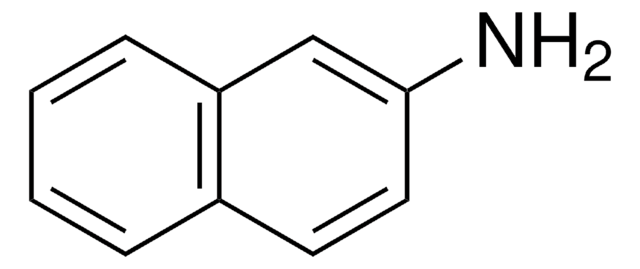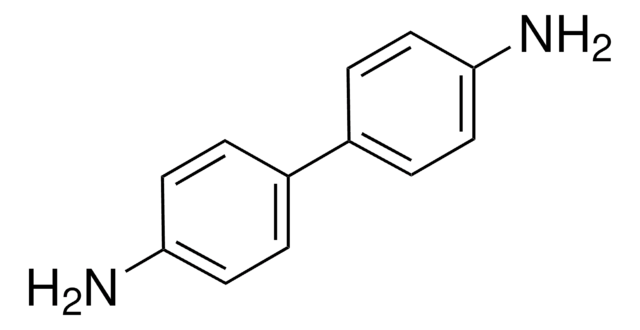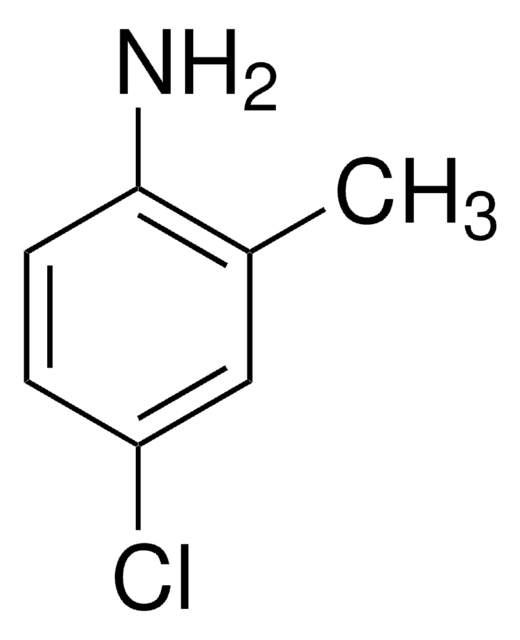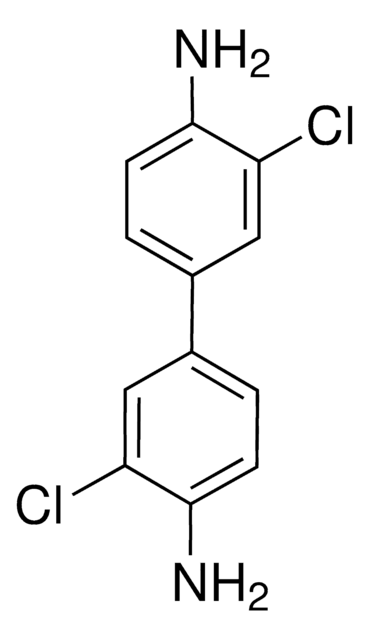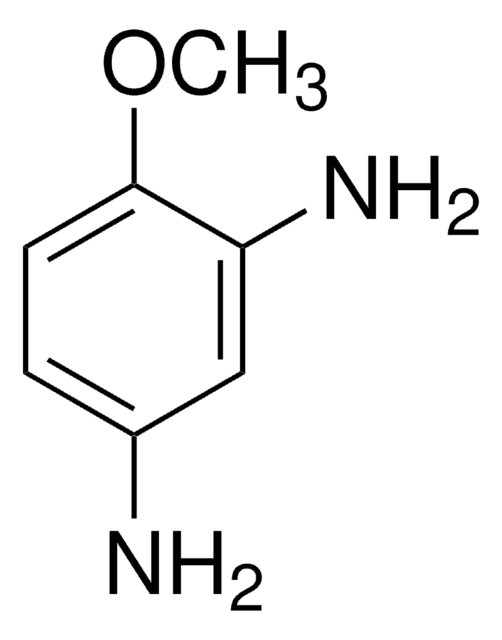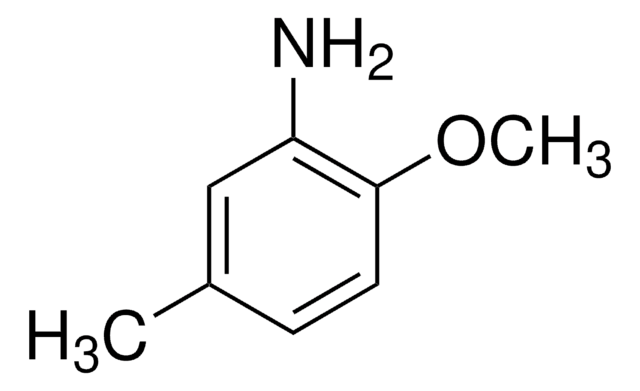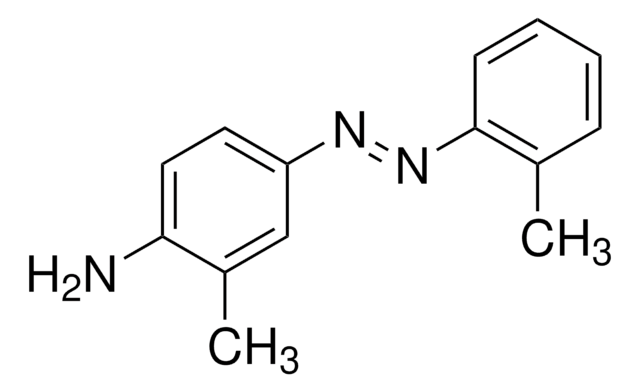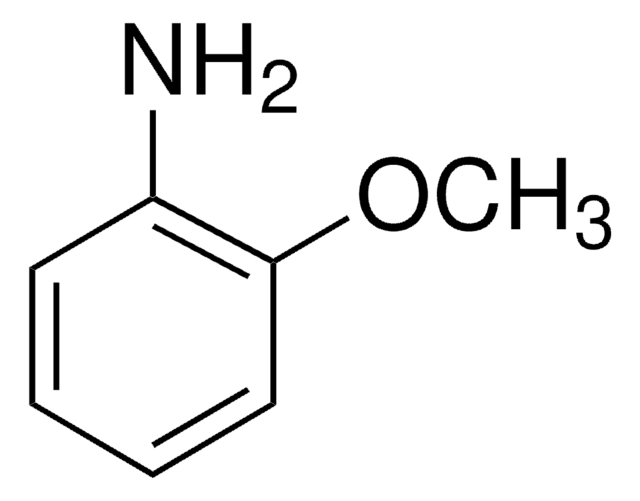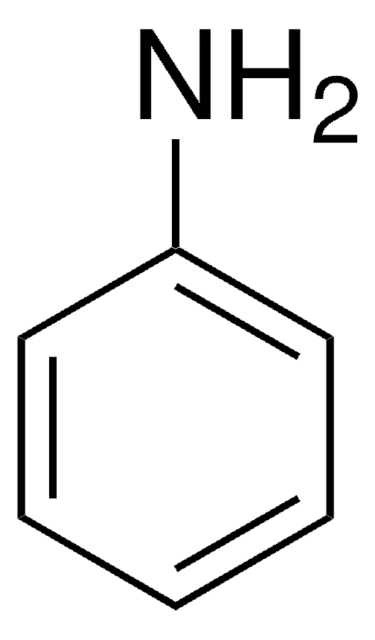Kluczowe dokumenty
31598
4-Aminobiphenyl
analytical standard
Synonim(y):
4-Aminodiphenyl, 4-Biphenylamine, 4-Biphenylylamine, 4-Phenylaniline, Biphenyl-4-ylamine, NSC 7660, Xenylamine
About This Item
Polecane produkty
klasa czystości
analytical standard
Poziom jakości
temp. samozapłonu
842 °F
okres trwałości
limited shelf life, expiry date on the label
metody
HPLC: suitable
gas chromatography (GC): suitable
bp
191 °C/15 mmHg (lit.)
mp
52-54 °C (lit.)
Zastosowanie
cleaning products
cosmetics
environmental
food and beverages
personal care
Format
neat
ciąg SMILES
Nc1ccc(cc1)-c2ccccc2
InChI
1S/C12H11N/c13-12-8-6-11(7-9-12)10-4-2-1-3-5-10/h1-9H,13H2
Klucz InChI
DMVOXQPQNTYEKQ-UHFFFAOYSA-N
Szukasz podobnych produktów? Odwiedź Przewodnik dotyczący porównywania produktów
Opis ogólny
Zastosowanie
It may be used as an analytical reference standard for the determination of 4-aminobiphenyl in:
- Particulate phase mainstream cigarette smoke samples by solid-phase extraction (SPE) and gas chromatography coupled to MS equipped with selected ion monitoring (SIM) mode of detection as well as simultaneous distillation and extraction (SDE) and GC-MS with SIM detection.
- Environmental water samples by hollow fiber-liquid phase microextraction (HF-LPME) and microemulsion electrokinetic chromatography (MEEKC).
- Indoor and outdoor air samples by GC-MS.
Hasło ostrzegawcze
Danger
Zwroty wskazujące rodzaj zagrożenia
Zwroty wskazujące środki ostrożności
Klasyfikacja zagrożeń
Acute Tox. 4 Oral - Carc. 1A
Kod klasy składowania
6.1C - Combustible acute toxic Cat.3 / toxic compounds or compounds which causing chronic effects
Klasa zagrożenia wodnego (WGK)
WGK 3
Temperatura zapłonu (°F)
235.4 °F - closed cup
Temperatura zapłonu (°C)
113 °C - closed cup
Środki ochrony indywidualnej
Eyeshields, Faceshields, Gloves, type P3 (EN 143) respirator cartridges
Wybierz jedną z najnowszych wersji:
Certyfikaty analizy (CoA)
Nie widzisz odpowiedniej wersji?
Jeśli potrzebujesz konkretnej wersji, możesz wyszukać konkretny certyfikat według numeru partii lub serii.
Masz już ten produkt?
Dokumenty związane z niedawno zakupionymi produktami zostały zamieszczone w Bibliotece dokumentów.
Protokoły
US EPA Method 8270 (Appendix IX): GC Analysis of Semivolatiles on Equity®-5 (30 m x 0.25 mm I.D., 0.50 μm)
Nasz zespół naukowców ma doświadczenie we wszystkich obszarach badań, w tym w naukach przyrodniczych, materiałoznawstwie, syntezie chemicznej, chromatografii, analityce i wielu innych dziedzinach.
Skontaktuj się z zespołem ds. pomocy technicznej